What Bees Live in Bee Hotels. Bee hotels are provided for bees to use as breeding places by cavity-nesting solitary bee species.
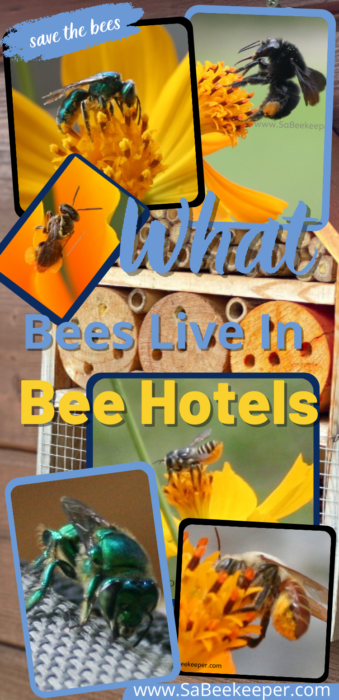
Bee hotels are places for solitary bees to make their nests. These bees live alone, not in hives. They do not make honey.
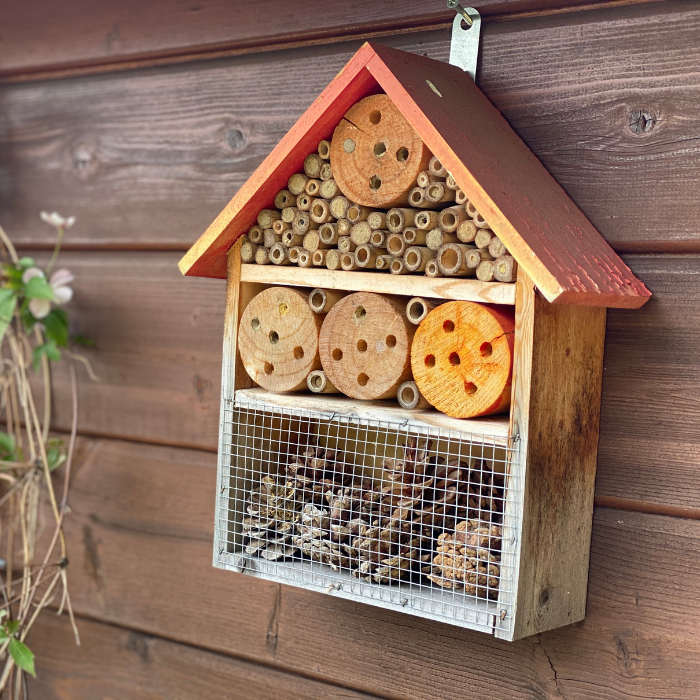
Many people are familiar with honey bees that live in a beehive and produce honey.
All about the honey bee life cycle and the queen bee life cycle.
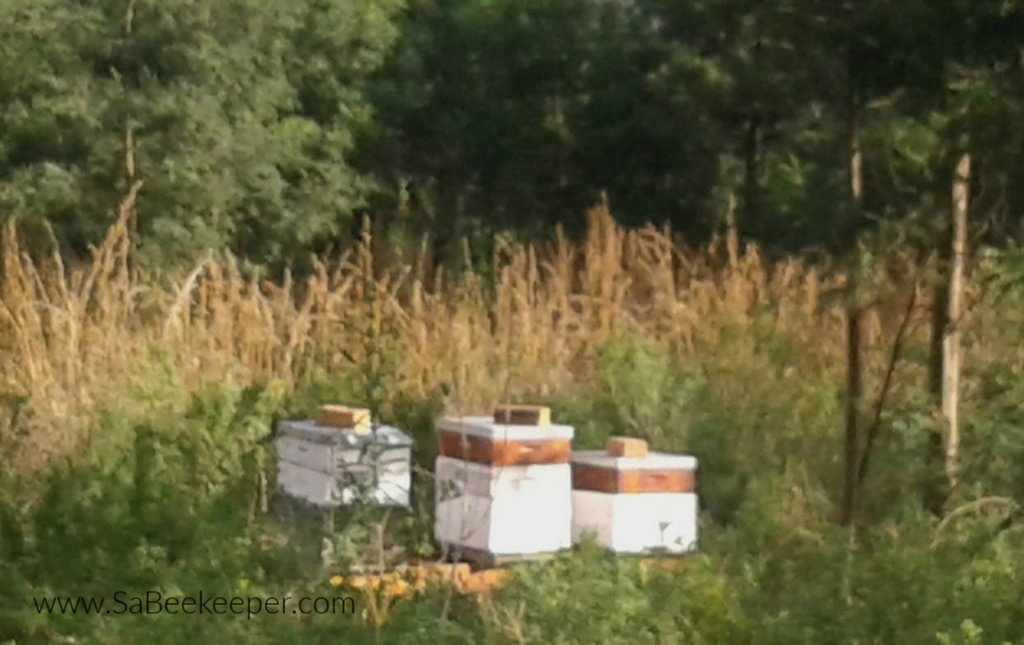
People are unaware of other species that are important pollinators and are solitary bees. They do not produce honey or have hives with their species, but live alone.
What some people don’t realize is that there are thousands of native bees and non-native solitary bees that also pollinate.
Some solitary bees nest in natural and man made cavities, these can easily be provided with nesting habits in a bee hotel. This will enable them to continue breeding well and pollinating the farm passion fruit flowers, as well as coffee flowers and other fruit blossoms.
In Ecuador plenty of these different species of bees have been found. view Bees species found in Ecuador South America.
Cavity nesting solitary bees.
A cavity nesting bee makes her nests where long tube holes are present. Such as hollow twigs, beetle burrows that are abandoned and tunnels on sides of buildings or old clay or sand bricks. In soils and plant stems as wells as reeds and bamboos. Soft or old tree wood are also popular.
Once she has chosen a nesting site she will lay an egg and provide that space (cell) with pollen and nectar(food for larvae). In late spring they will start to hatch. Males hatch first and wait for the females and mate and then die off.
Then the cycle starts all over, some will nest in the same site if it is still useable.
Some species of bees that we have found on our farm that can use a bee hotel.
Mason Bees
Mason Bees are the size of a honey bee, and are black or a dark metallic green or blue.
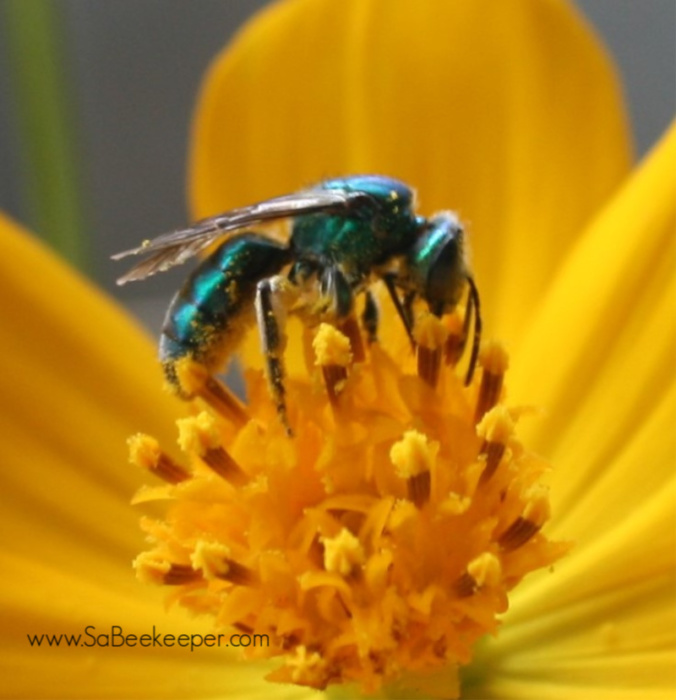
They also carry pollen on the hairs on the lower abdomen of its body called a scopa.
Learn about this mason bees life cycle. here. Life cycle of mason bees species.
The Orchid Bee
The blue green orchid bees are very effective pollinators for the fruit orchids.
More posts on these beautiful friendly bees. What their habits are as well.
Orchard bee collecting fragrances. and hovering metallic green orchard bee
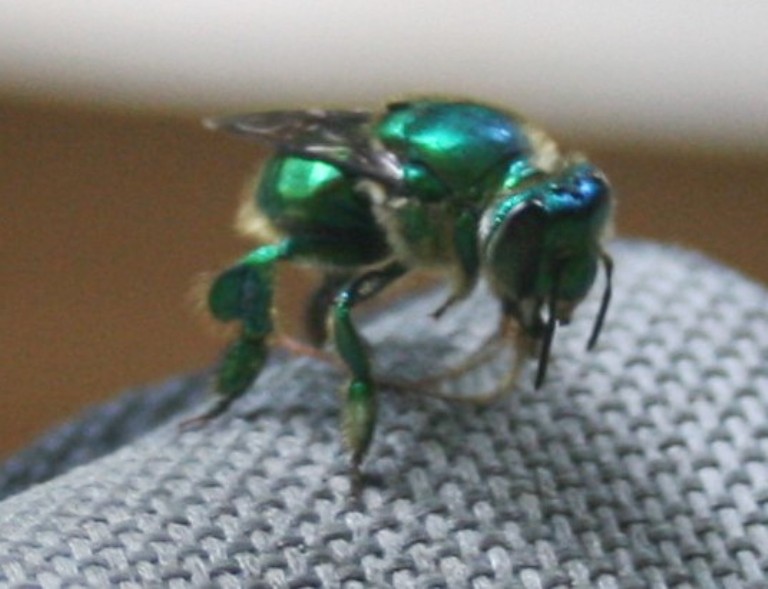
Carder Bumble Bees and Black bumble bees
These bumble bees make nests in grasses or some heaped up old grass and this can easily be placed in a compartment or part of the bee hotel and held together with some mesh wire. It is important to have a dry nest. So i guess its better than a wet ground nest.
A black bumble bee often seen on flowers and passion fruit flowers. Pollinating well.
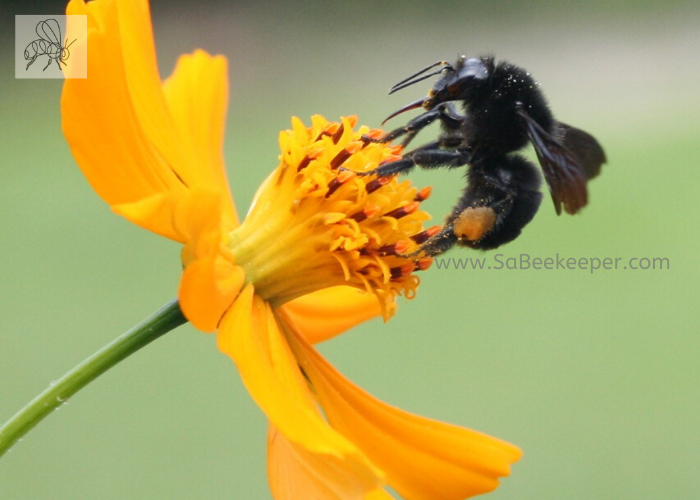
Carder ginger tailed bumblebees. Some pollinating a monk orchid.
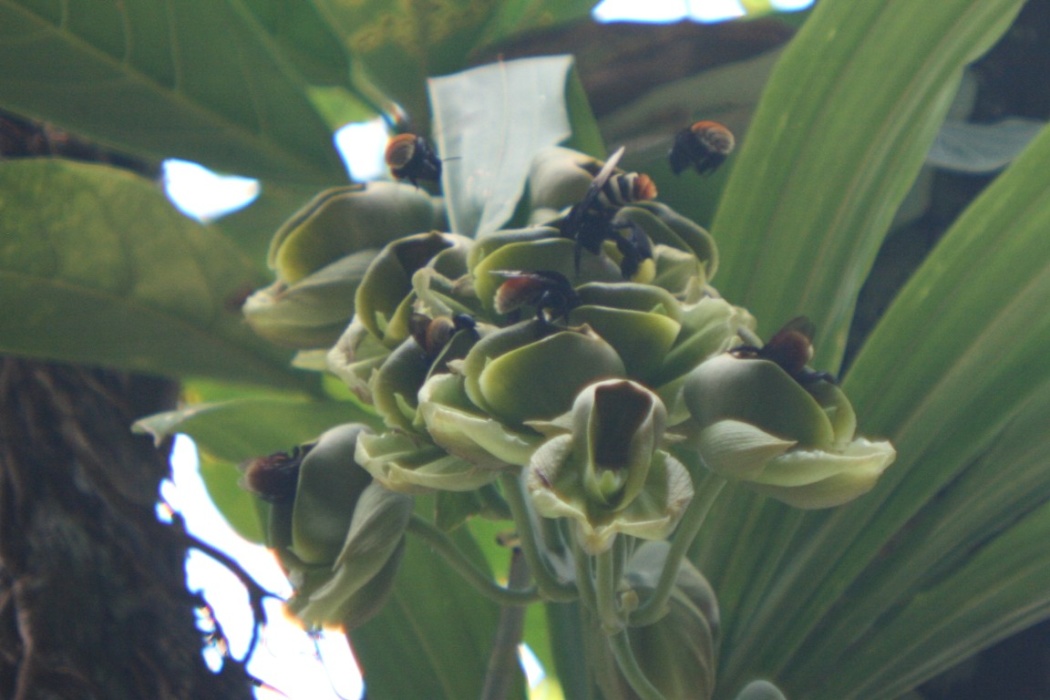
Life cycle of the Bumble bees. click here.
Carpenter Bees
These large carpenter bees love to make holes for nests in soft wood. Any type of old or softer wood they make tunnels and then the sawdust gets pushed out of the nest. They have these mandibles that are like nippers that dig out the wood or sawdust particles.
View the carpenter bees life cycle here and see how it builds a nest.
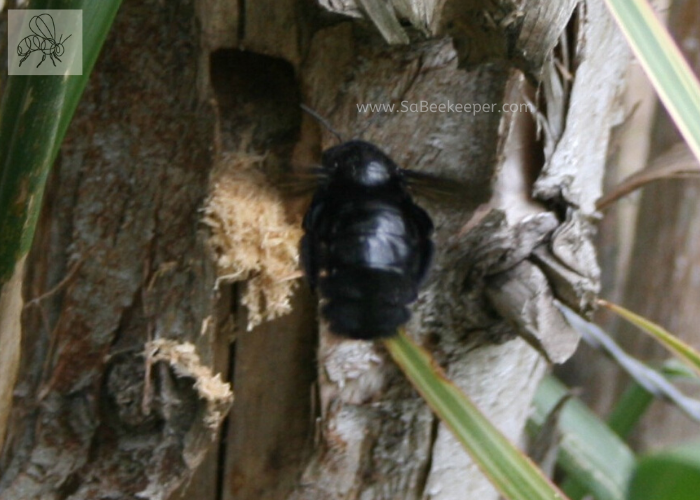
For the carpenter bees you can provide a cut off piece of soft wood and drill different sizes of holes in them. They can finish the holes themselves. It’s believed they make a 90 deg. angle in the tunnel for their nest.
Leafcutter Bees
Leafcutter bees are small to medium sized bees, with stout bodies, and yellow coloring under the abdomen. They say the mason and leafcutter bees have a scopa underneath its abdomen to carry pollen. Also have large scissor like mandibles (nippers) to cut the leaves or petals for the nest building cells or chambers to lay an egg in. The pieces of leaves are round and get carried back to the nest.
Below is a red leafcutter bee carrying a piece of leaf to the nest.( in yellow). Learn and see how she does it. In these few posts.
a video slide of the bee building a nest.
How she builds her nest and wards off a wasp looking at her nest.
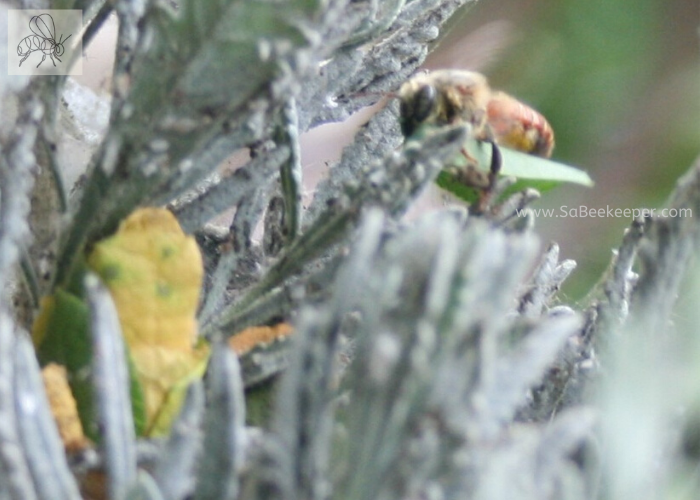
They rest at night in the nest then carry on building the next day. The cap off the leafy nest well with a few layers of leaves to seal it by nipping the edges together well.
The leafcutter bees will also make their nests in holes drilled into wood. Make all different diameters. Place some reeds and plant stems for them to nest in. All different diameters are needed.
Other leafcutter bees such as this dark one. The leafcutter bees life cycle.
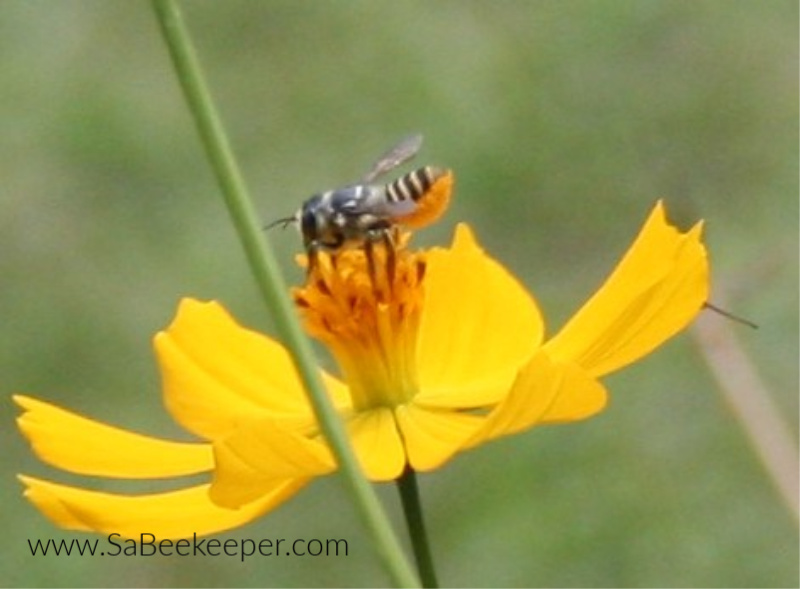
We also have a patchwork leafcutter bee.
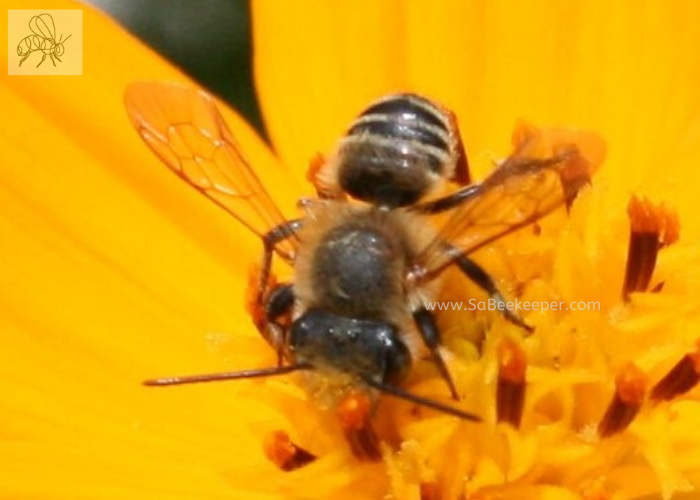
Sweat bees
The Sweat bees are also your native bees.
All Sweat bees vary greatly in appearance, ranging from very small to medium in size. The majority of sweat bees are brown or black in color, but a handful are a beautiful metallic green, blue or even purple.
Some posts on the sweat bees.
The green sweat bee pollinating flowers
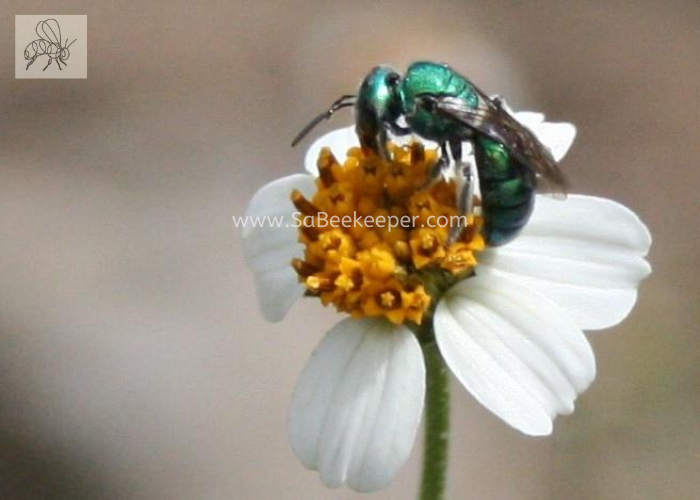
Nearly all species nest in the ground, but they exhibit varying levels of social behavior.
In the bee hotel one would then place some ground and see if you can make tunnel like systems for the sweat bees to nest in.
Below is the dark sweat bee, and a post on How to live with sweat bees (as some people think they are a nuisance)
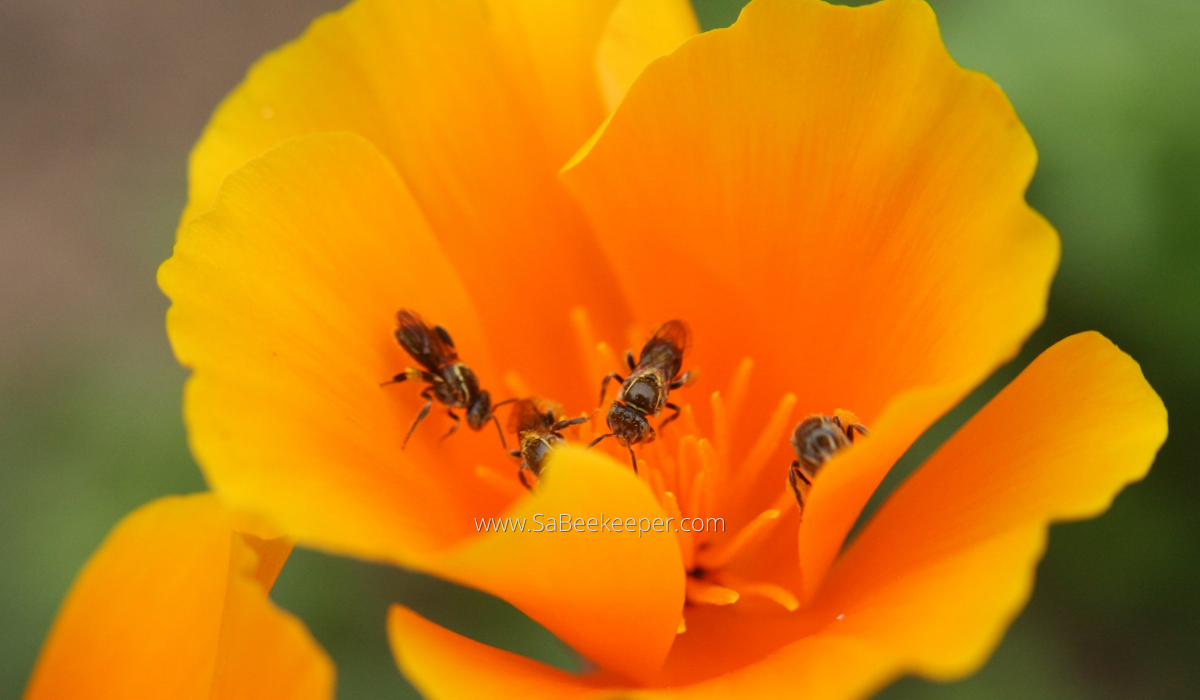
But all sweat bees are great pollinators. Garden poppies and dark sweat bees.
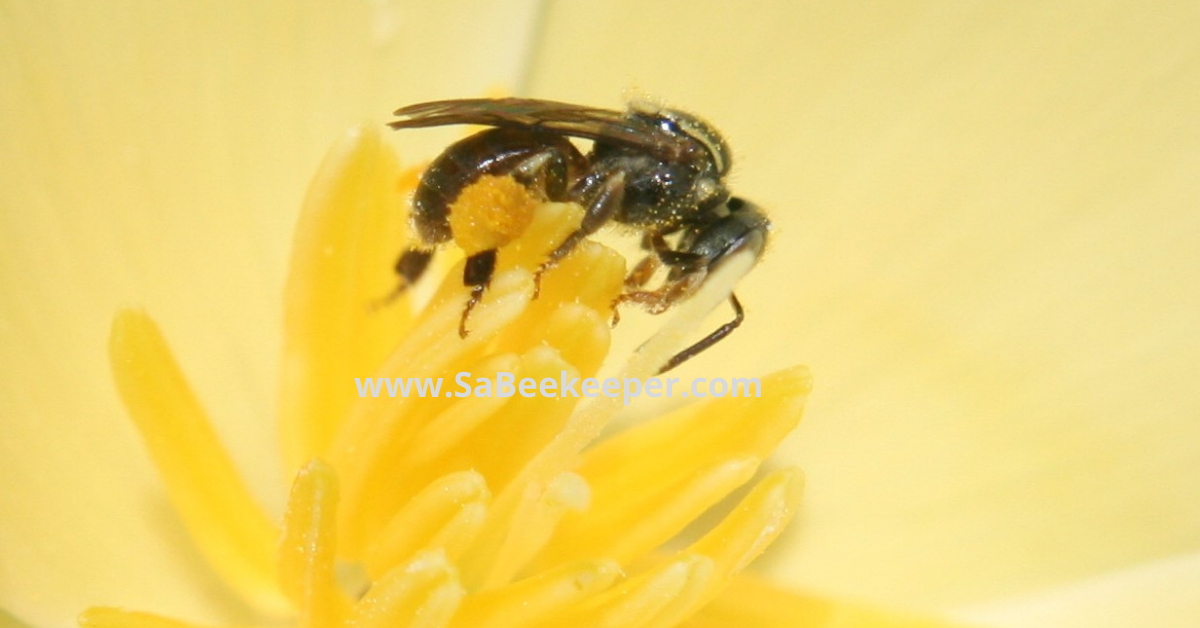
Getting ready for your guests in Bee hotels, fill them up and get them out there. Every bee on the planet needs to be saved. Help them.
None of these bees are aggressive, so they are fine around children and pets.
What are the two potential problem with bee hotels
Pollen mites are one of the biggest threats to the habitability of bee houses located in humid environments or built of materials like bamboo that don’t dry easily. “If there’s no way for moisture to dissipate from the nest then the mites take over.
The other problems would be to keep the nesting places dry and making sure to replace them now and again.
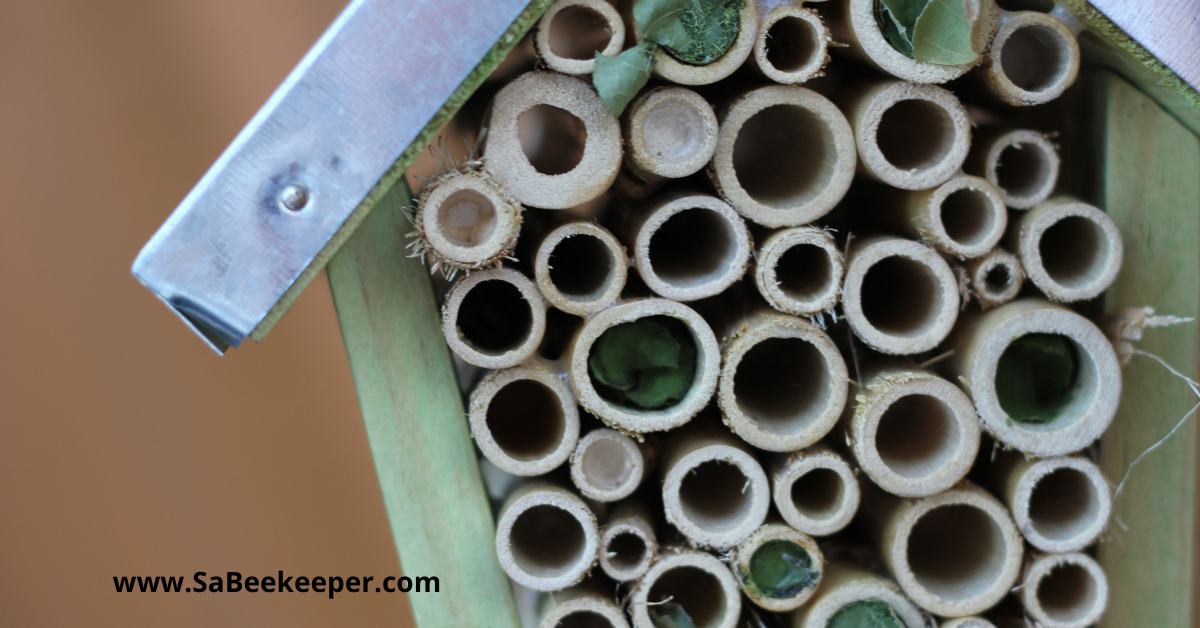
Where to put a bee hotel.
Carefully clean away any sawdust, as this will also put them off. The bee house must be positioned in full sun, facing south east or south, at least a meter off the ground, with no vegetation in front of it obscuring the entrances to the tunnels.
Hanging the bee hotel from the under cover of overlapping roof are good. Maybe in some trees as well.
Again this is very important.
How to attract bees to a bee hotel.
Make a wooden box and fill it with hollow stems such as old flower stalks or bamboo canes, which you have dried thoroughly and cut to size. Ideally, holes should vary in diameter between 2mm and 10mm, to attract the widest range of species. Site your bee hotel in a sunny spot, ideally so it gets the morning sun.
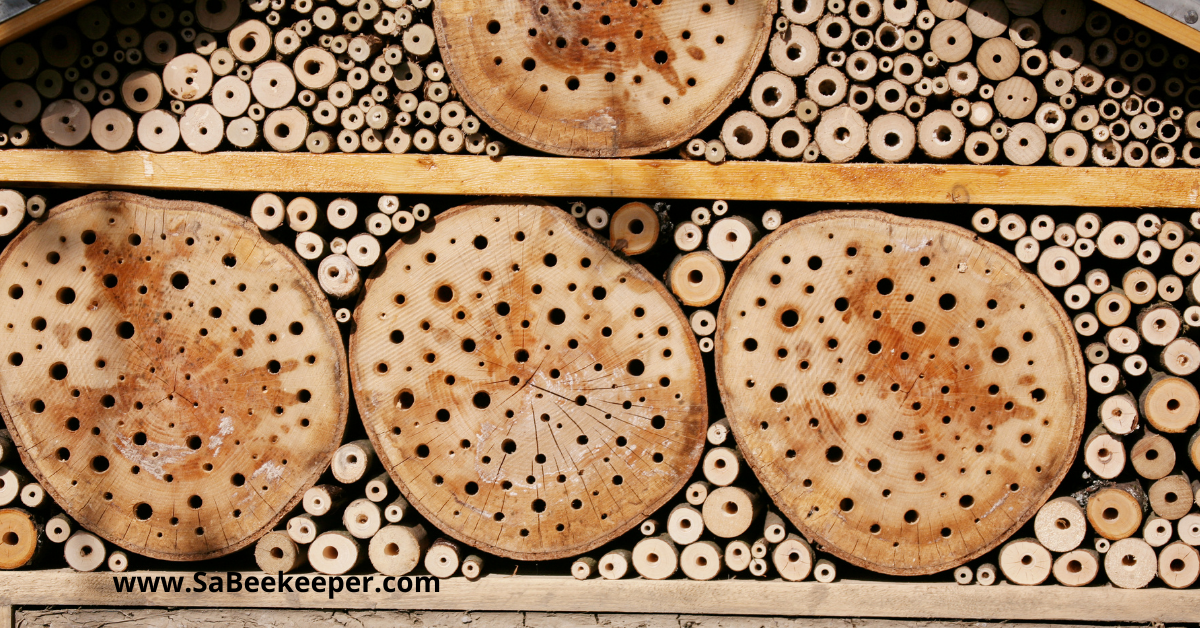
How to clean and do maintenance on a bee hotel
With no cleaning, fungi, debris and parasites tend to build up which can be damaging to the bees. Bring your nest box into an unheated shed or garage during the autumn and winter to protect it from damp and wet weather. If you don’t have either then a porch or any covered area will do. (that’s if you live in harsh climates)
Choose to clean your Bee Brick or Bee Block bee house between seasons then just ensure that the nest has definitely either failed or emptied. It’s best to time it at the end of the season, so late September to October.
How to make a Homemade Bee Hotel. Because they are necessary.
The moral of the story is there is more species out there and this is a short summary of what bees live in bee hotels.
Purchase some of these bee hotels but you can make them at home as well.
This post may contain affiliate links, where we earn from qualifying purchases.
Leave a Reply